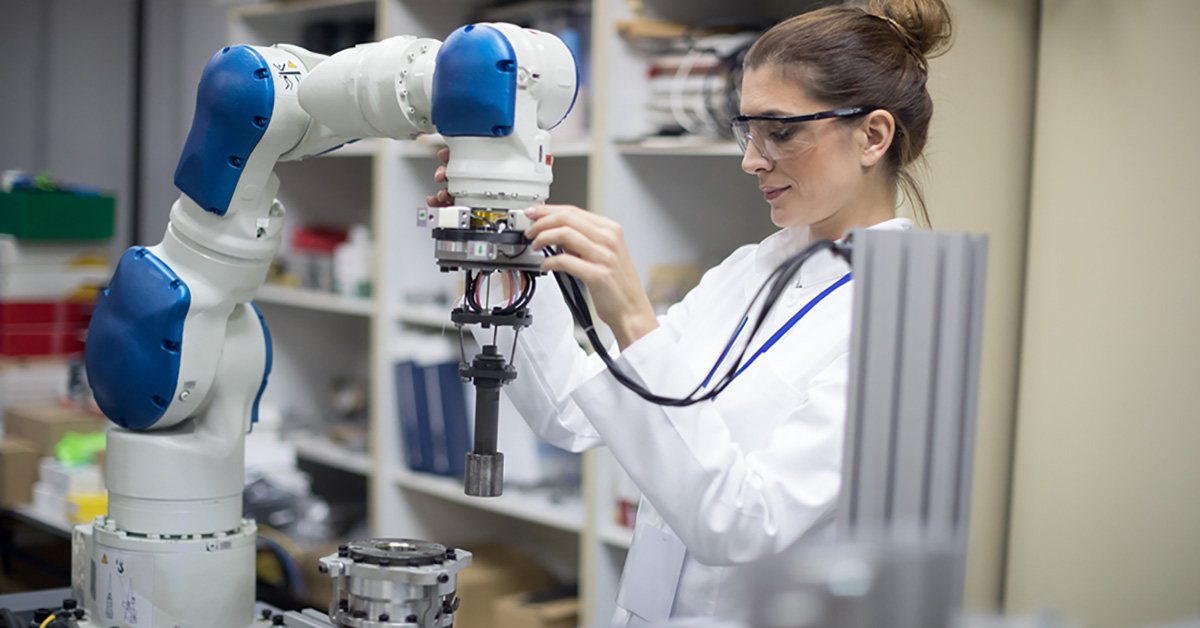
The emergence of interactive, collaborative robots has opened up new possibilities for industries worldwide, from manufacturing and healthcare to retail and education. These powerful machines bring a level of automation that can increase efficiency in tasks and facilitate rich human-machine interactions with direct physical feedback. With their potential to radically shape how we work and interact, it’s no surprise that businesses are racing to incorporate robotic technology in their operations.
Yet this transition is far from easy it involves many challenges and opportunities ranging from training humans on how to safely operate these machines to exploring ethical implications regarding privacy and security. In this article, we’ll explore these issues in more detail while looking at industry examples of success with robotics implementations.
Table of Contents
What Challenges Do Collaborative Robots Face?
A collaborative robot’s primary challenge is ensuring its safety. Robots must be programmed and certified to meet specific industry standards, avoiding potentially dangerous interactions with humans. This process can be labor or resource intensive, requiring a significant amount of time and resources to ensure safety protocols are in place. On top of this, operational costs also need to be considered. The cost of installation, maintenance, and adaptation to changing conditions must all be accounted for in the operational budget.
Another challenge is teaching humans how to interact with the robot safely, as collaborative robots often perform tasks that require close human-robot cooperation. It requires significant training and education regarding safety protocols, which can take time and resources away from other projects. Additionally, cultural acceptance plays a vital role in the success of robotic implementations. If people feel uncomfortable or intimidated by these machines, it can lead to adverse reactions and hinder adoption.
Finally, ethical considerations must also factor in when introducing interactive robots: issues such as privacy and security could arise due to the potential storage of large amounts of sensitive data. As such, companies must ensure their robots comply with industry regulations and have adequate security measures in place.
Opportunities That Arise From The Use Of Interactive Cobots
The potential benefits of using interactive, collaborative robots go far beyond increased efficiency and cost savings. By introducing robotics into business processes, companies can gain access to new levels of productivity and accuracy, enhancing customer service through faster response times.
Robotic automation also opens up a world of data collection and analysis possibilities. By equipping robots with sensors, companies can access a massive volume of real-time information about their operations – from supply chain management to quality control. They have better insight into their systems’ workings, allowing businesses to make more informed decisions and optimize for maximum efficiency.

Finally, interactive, collaborative robots offer a unique level of human-machine interaction that can enhance engagement and encourage collaboration between team members. By allowing teams to work together on tasks using intelligent machine learning algorithms, these machines can provide valuable feedback during training sessions or help facilitate problem-solving in complex scenarios – giving companies an edge over competitors without such technology.
What Types Of Tasks Are Best Suited For Cobots?
Collaborative robots are best suited for tasks that would otherwise be too complex or tedious for humans. These machines can provide unprecedented precision and accuracy, making them invaluable in assembly lines and quality control processes. Cobots can take on dangerous tasks such as handling hazardous materials or working in extreme temperatures, freeing human workers to focus on more critical tasks.
Robots can also provide real-time data analysis and feedback regarding a given process, allowing companies to make informed decisions quickly.
These machines allow for the automation of mundane daily activities – from filing paperwork to data entry – which helps reduce overheads without sacrificing quality or accuracy. The ability of interactive, collaborative robots to work alongside humans opens up a world of possibilities for businesses looking to optimize their operations.
In Summary
The introduction of interactive, collaborative robots into the workplace brings with it both challenges and opportunities. On the one hand, there is a need for significant investment in training and education regarding safety protocols, cultural acceptance, and ethical considerations. On the other hand, companies can benefit from increased efficiency, cost savings, improved customer service, and access to real-time data analysis – all of which offer an advantage over competitors without such technology.
Ultimately, understanding how these machines work and what tasks they are best suited for is essential for businesses looking to get ahead in today’s increasingly competitive market.